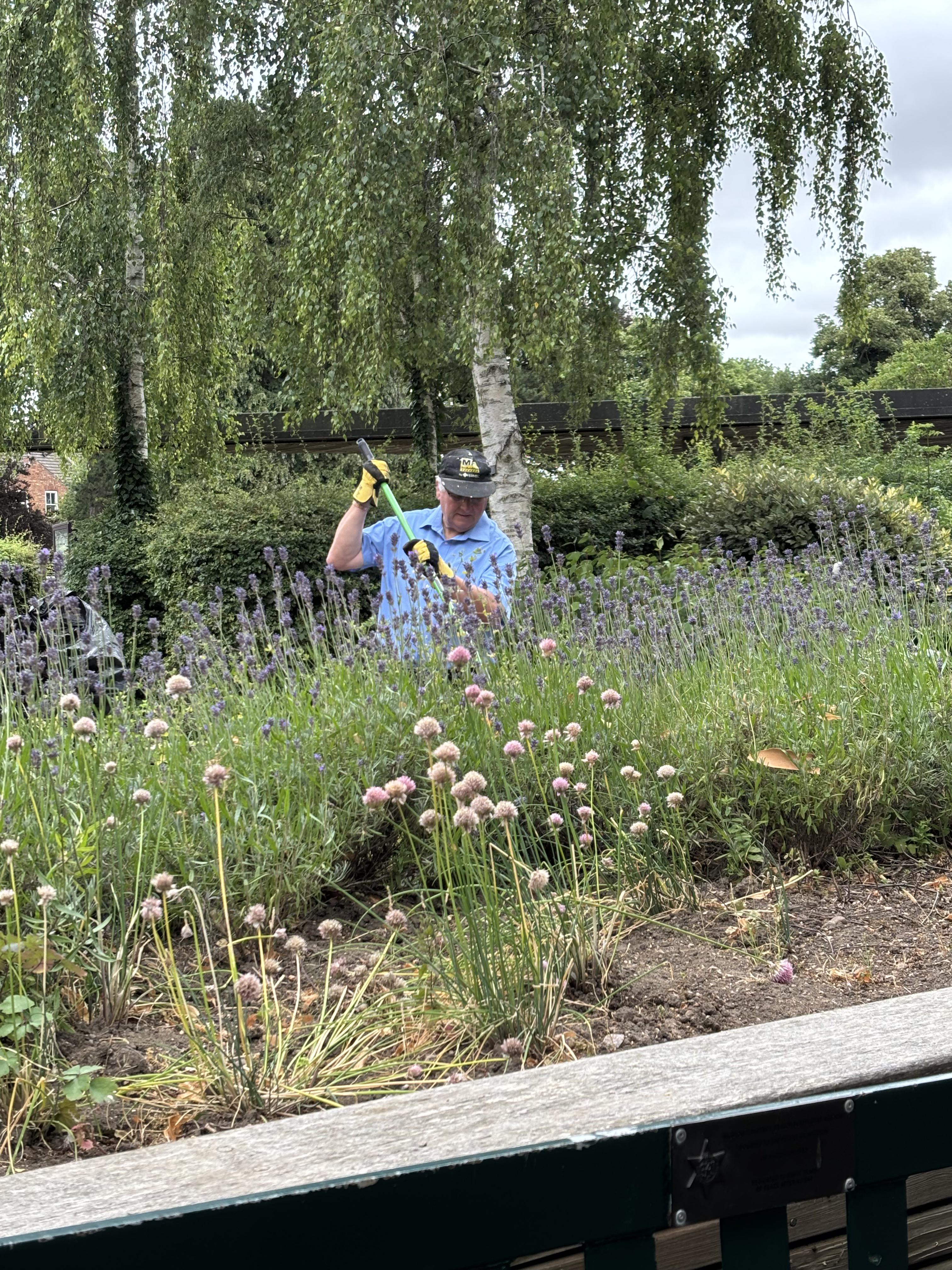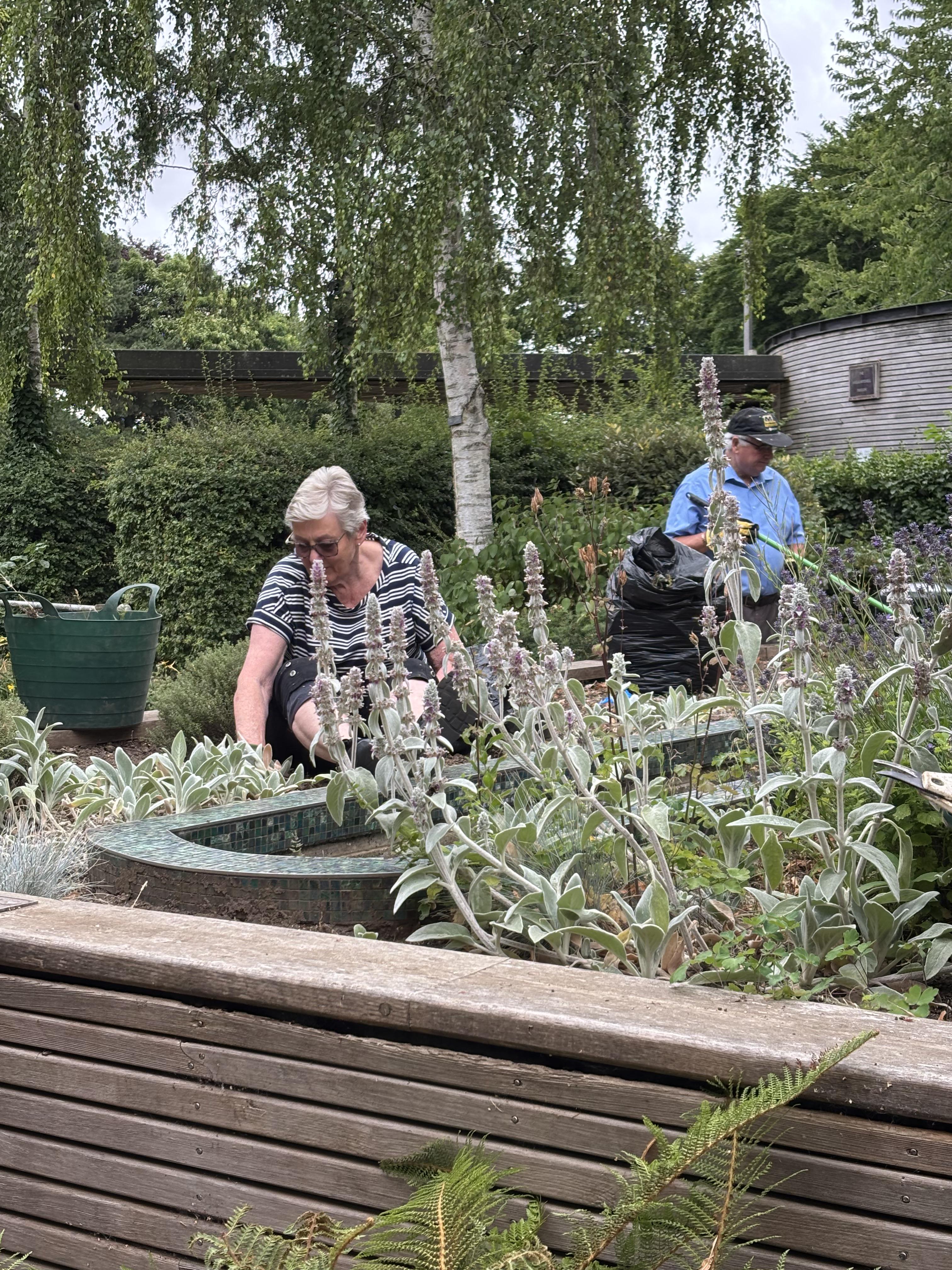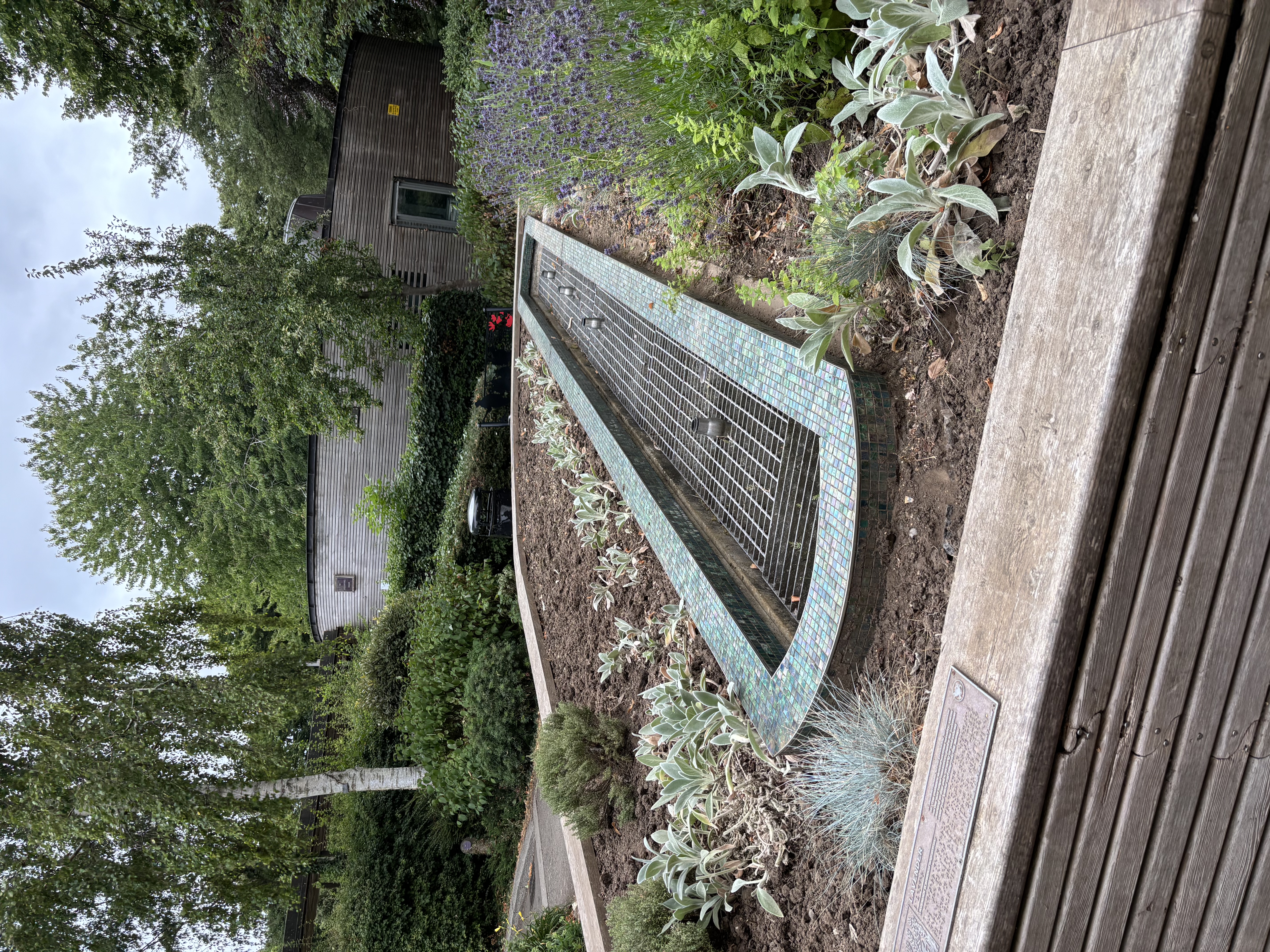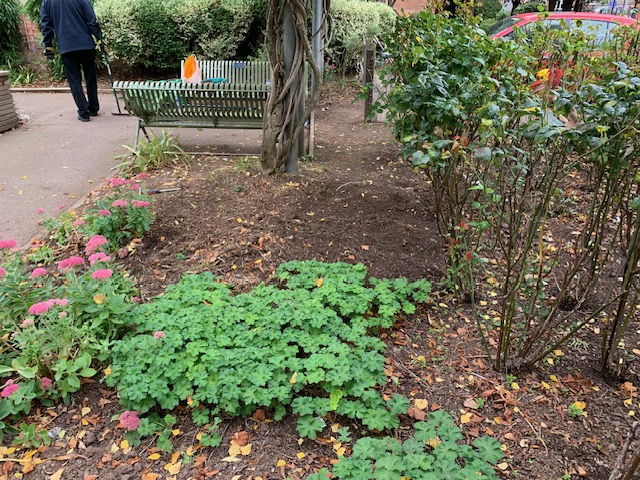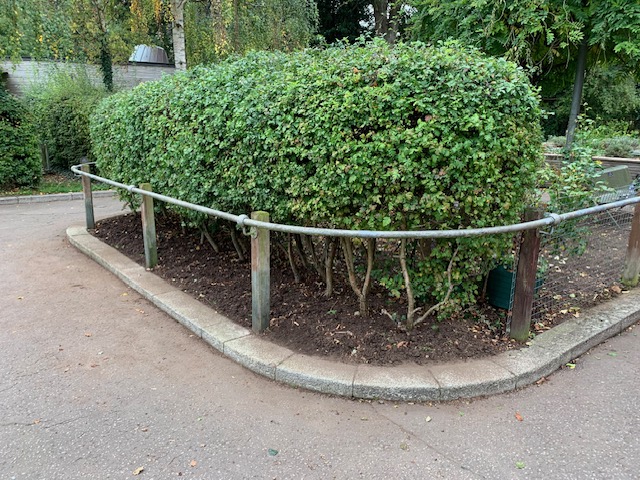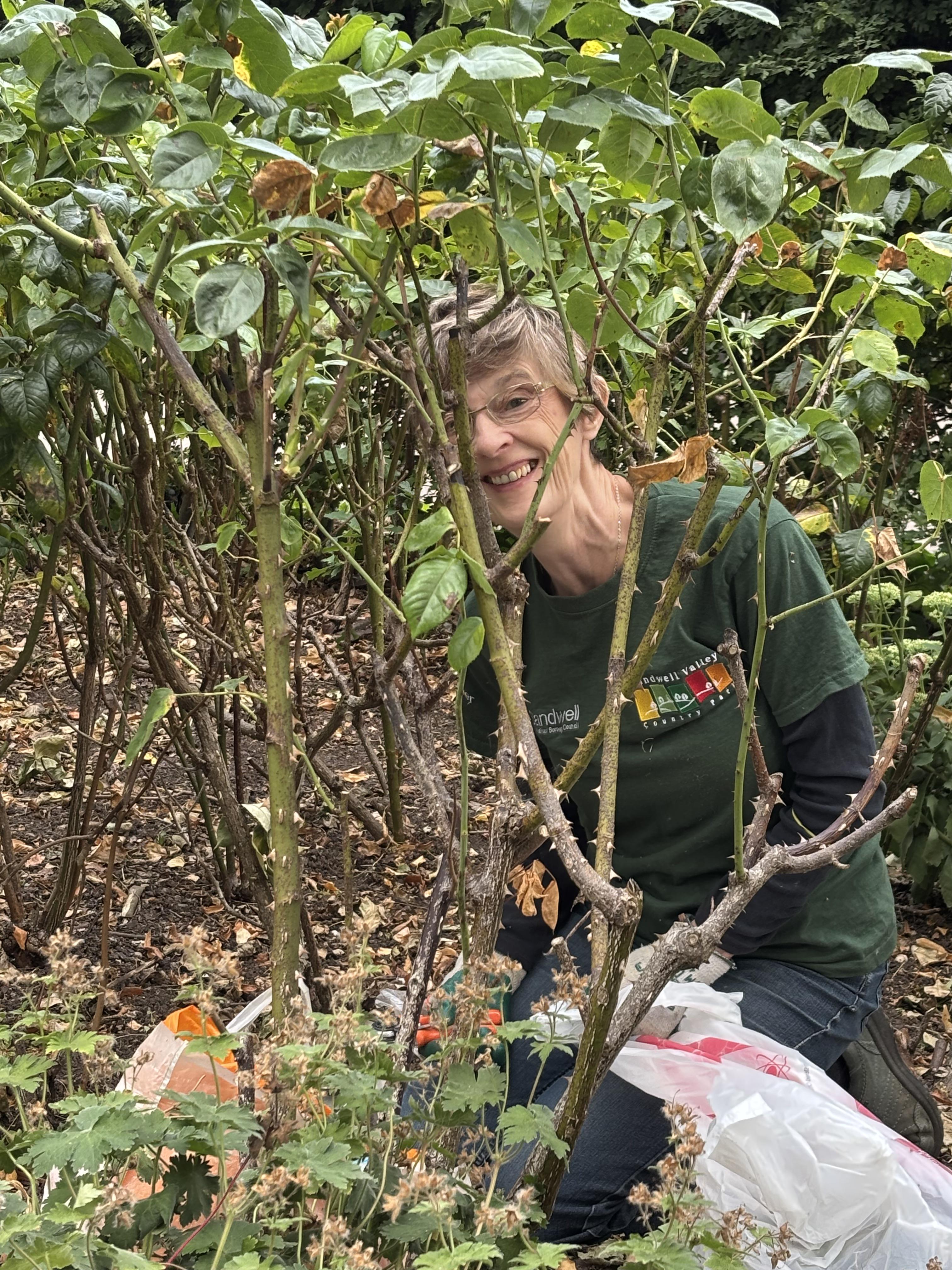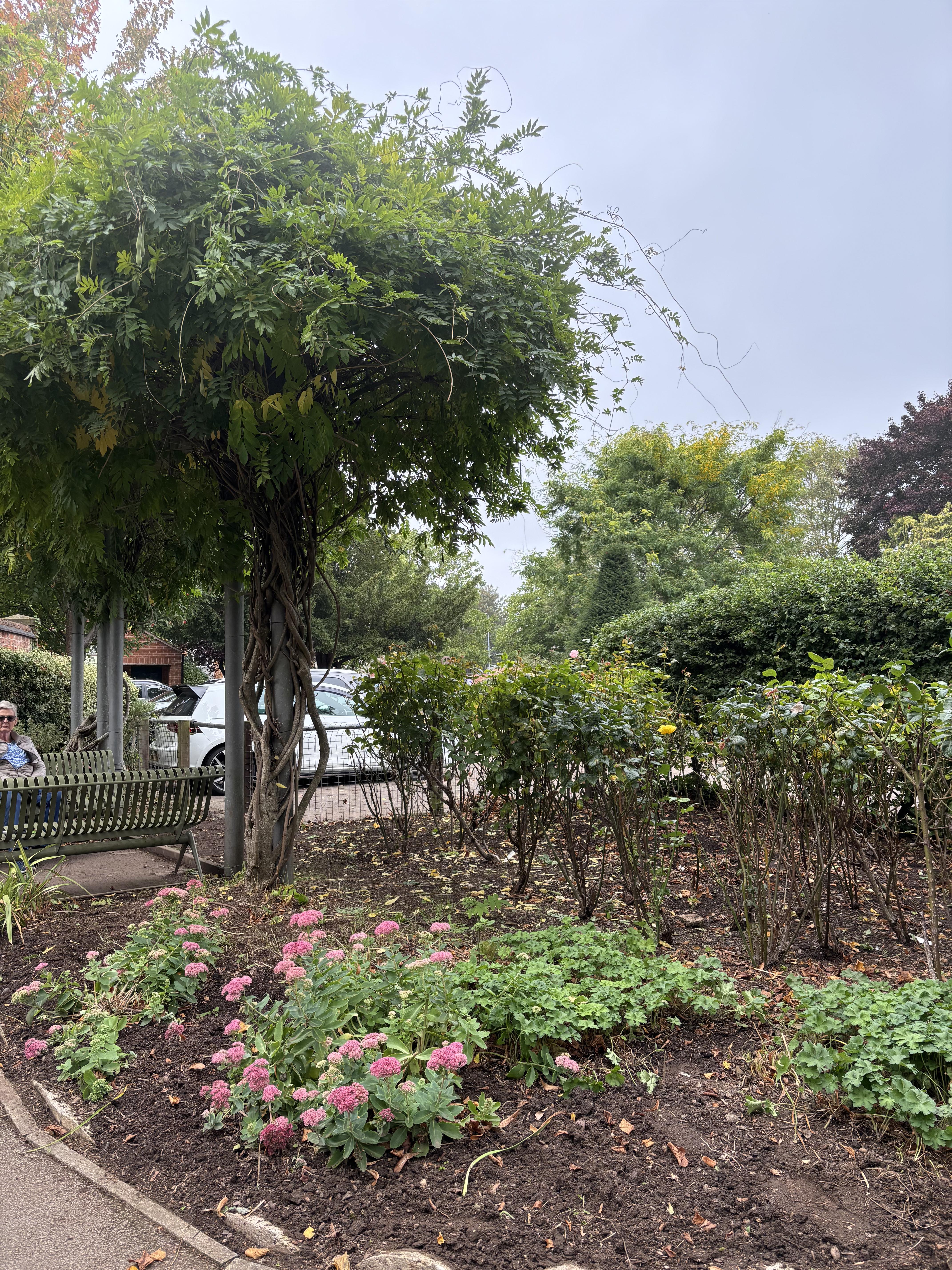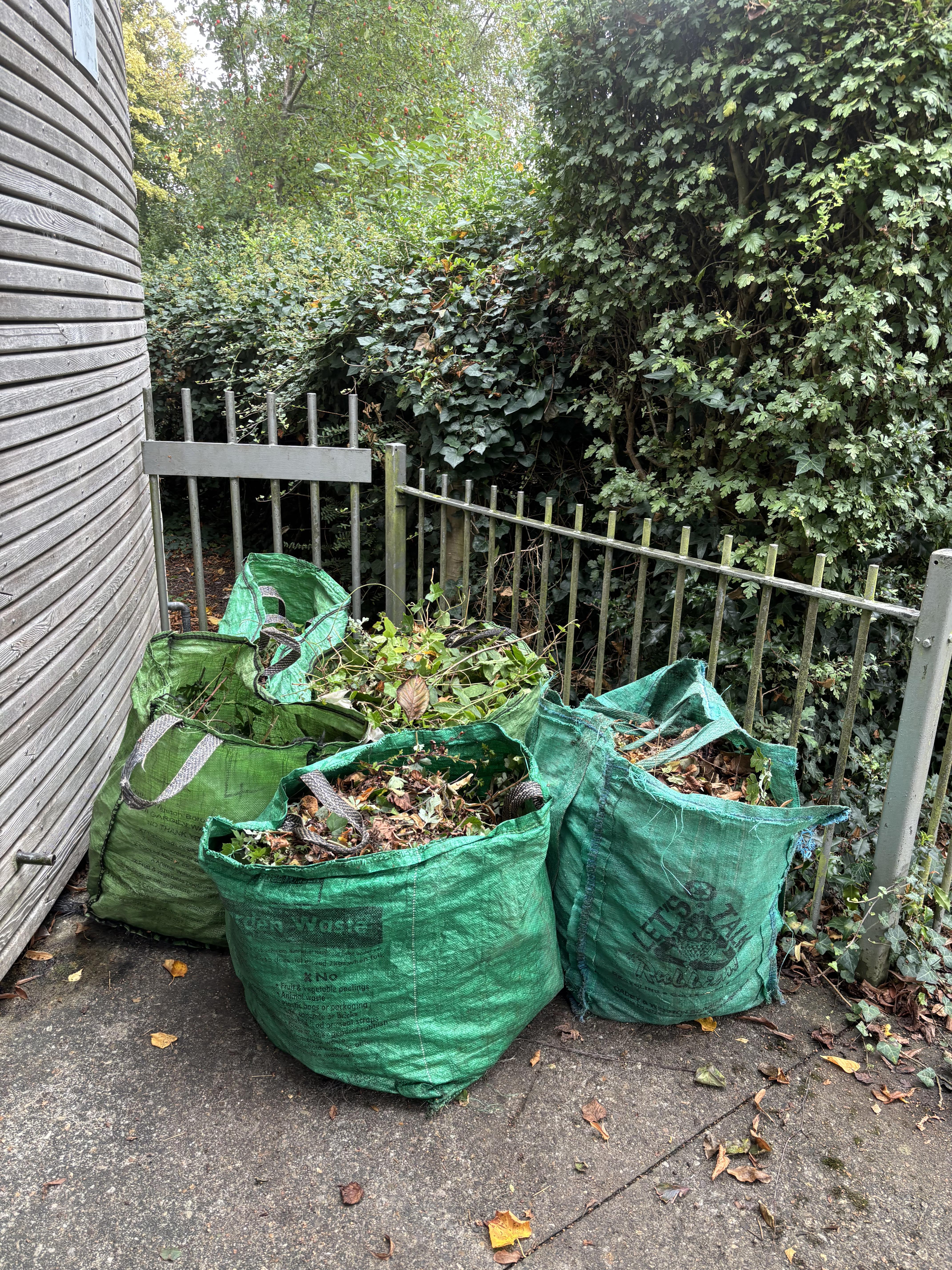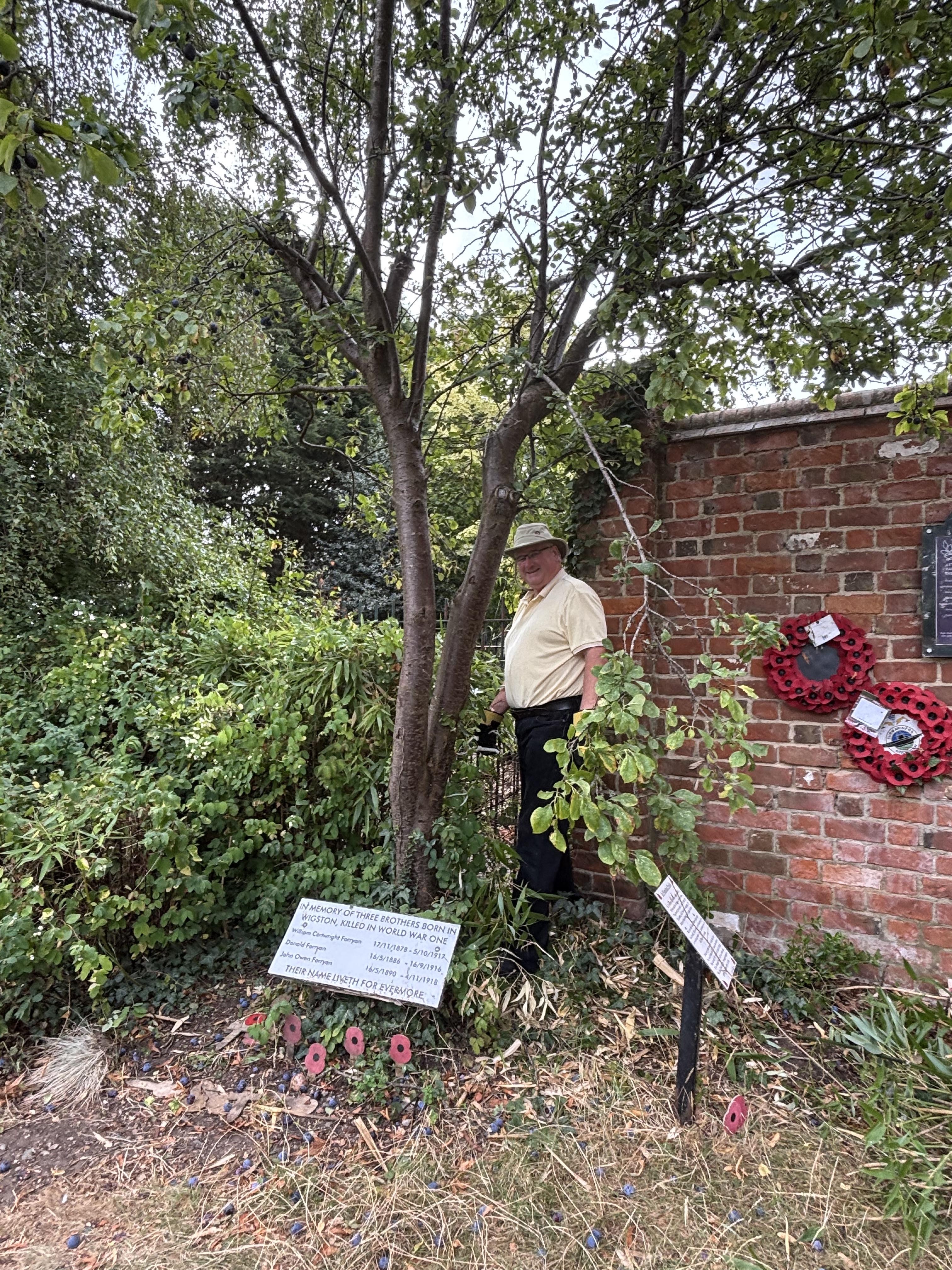





THE GREATER WIGSTON
HISTORICAL SOCIETY

PEACE MEMORIAL PARK, WIGSTON
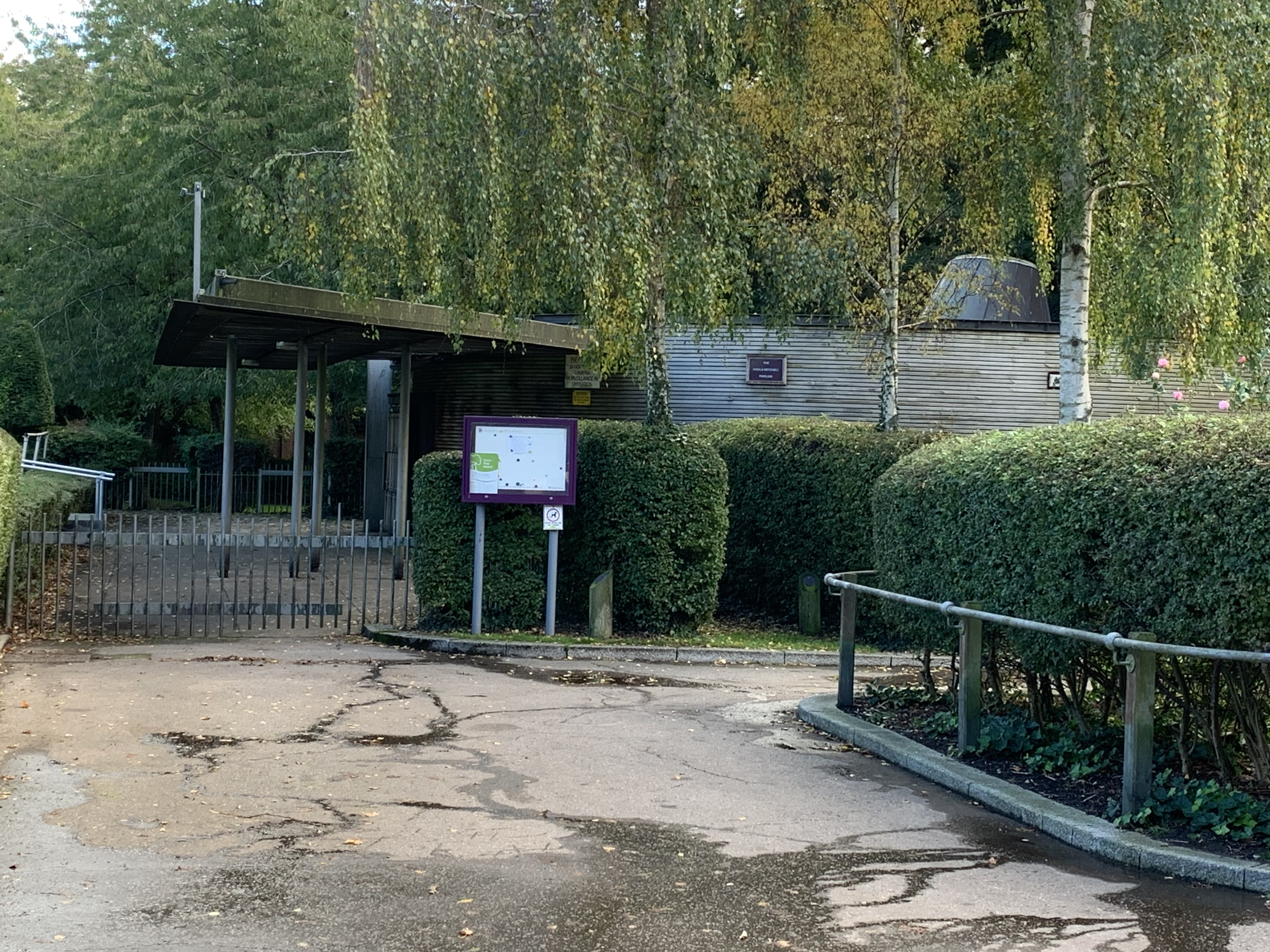
Established in 1921 by public donation the park is at the historic centre of Wigston. Recently rejuvenated with a Heritage Lottery Fund grant the park now boasts an award-winning pavilion, home of Wigston's bowls clubs the pavilion is also used by the community. The park is fortunate to have an active Friends Group, who were instrumental, in partnership with the Oadby & Wigston Council, in achieving the lottery grant and continue to be involved in the ongoing management of the park as witnessed by this award.
The Peace Memorial Park was awarded a Green Flag in July 2007, and in each successive year since up to 2024 so far. The Green Flag Award scheme began in 1996 as a means of recognising and rewarding the best green spaces in the country. It was also seen as a way of encouraging others to achieve the same high environmental standards, creating a benchmark of excellence in recreational green areas.
Timeline of the History Of The Park
From The Book The Story of Peace Memorial Park Wigston Magna
Items marked in BLUE are links to more information
1921 The Park
Land formerly known as “Goal Close” was bought from its owner Albert Hill (seen opposite) in 1921 by the Council from a fund provided by public subscription “for establishing a memorial of the Peace which terminated the Great War”.
The purchasers, on behalf on the Council, were Mr A H Broughton and Mr C E Hurst both local hosiery manufacturers and Mr J E Rawson, a Council secretary. The indenture was signed on 9th April 1921 for an amount of £471.50, interestingly Albert Hill was an uncle of the Boulter family and Ida Boulter (nee Holmes 1911 – 2002) helped local people to lay a mile of pennies around Wigston to raise funds for and interest in the formation of the park.
Since 1921 the park has been variously known as War Memorial Park, Peace Memorial Park, Memorial Park and Little Park. The site of 2 acres was laid out by the Council in accordance with the wishes of the community to include “ one or more bowling greens and one or more tennis courts” as described in the Conveyance. A “quick set fence and laurel shrubbery” was also required along the northern boundary, as a condition of the Conveyance.
1922
Wigston Bowling Club first began to play on the green that had been constructed by the Council. The green was built as a skew square in plan and slightly small, as it remained for nearly 80 years until during the park’s restoration it was enlarged and squared off.
1928
The first bowls Pavilion was built by the Bowling Club, under the licence of the Council. It was a dark room with walls of polished wood, trestle tables and school-like lockers, with a large cupboard in one corner for pots and crockery. There were no toilets.
1937
Wigston Ladies Bowling Club was founded, with a corresponding increase in the demand for space in the pavilion.
1939
Facilities in the pavilion became increasingly inadequate as the Bowling Club expanded and other amenity groups began to use the pavilion for meetings. The building was purchased by the Council for the sum of £100 and was extended by roughly two-thirds of its original size, including a canopy with seating.
1953 Queen’s Coronation
Historic photographs show the attention given to the upkeep of the park and the flora beds. In her history of the Bowling Club, Doris Chandler stated that:
“at that time … the park was a real ‘eye catcher’ and many prizes were won by the floral displays adjacent to the road” (Long Street). “People would come from miles around to see the carpet of flowers with a border of shrubs, and wedding parties from the Congregational Chapel (now the United Reformed Church) next door would often use the park for their wedding photographs. The good folk of the village were very proud of their park, and rightly so, for it was always a joy to behold”.
1955
The Pavilion was extended a second time by three-quarters of its original size, in order to meet the needs of a growing bowling club.
1978
The Pavilion was demolished and replaced with a larger building
1981
The community initiated the proposal in 1981 to designate The Lanes (including the park) as a conservation area.
1996
The memorial park project team was formed to liaise with the Council, largely to address park security and damage to the pavilion. It organised the public meeting that led to the formation of the Friends of Peace Memorial Park.
1996
In keeping with a history of self governance the Wigston community initiated the proposal to restore Peace Memorial Park as a focus for the community. Just as local people decided upon the use of the former Paddock as a park in 1921, upon the occasion of the 75th anniversary of the park, the Friends of Peace Memorial Park group decided to drive the production of a master plan for restoring and enhancing the park.
1997
The Council appointed consultants Parklife from London to draw up a Master Plan and Lottery bid for the park in conjunction with the Friends.
1998
The Heritage Lottery Fund approved a grant of 75% of the £786,000 cost of restoring and improving the park over 5 years, in order that future generations may continue to enjoy it as a special place and a memorial to peace.
2002
Restoration of the park was completed. The new pavilion replaced the 1978 building and is intended to serve all community groups, including users of the sports courts and the bowling green. The red canopy of the rear of the building faces an open grass area and is intended for use by local bands.
Within yards of the park, the rich local heritage of Wigston remains, for the keen observer to unravel – the architecture – the street pattern – The Lanes and the field pattern – the topography – vegetation – old farm buildings – framework knitters buildings – hosiery factories – street names and shop names, it is all there. Go and see this heritage for yourself.
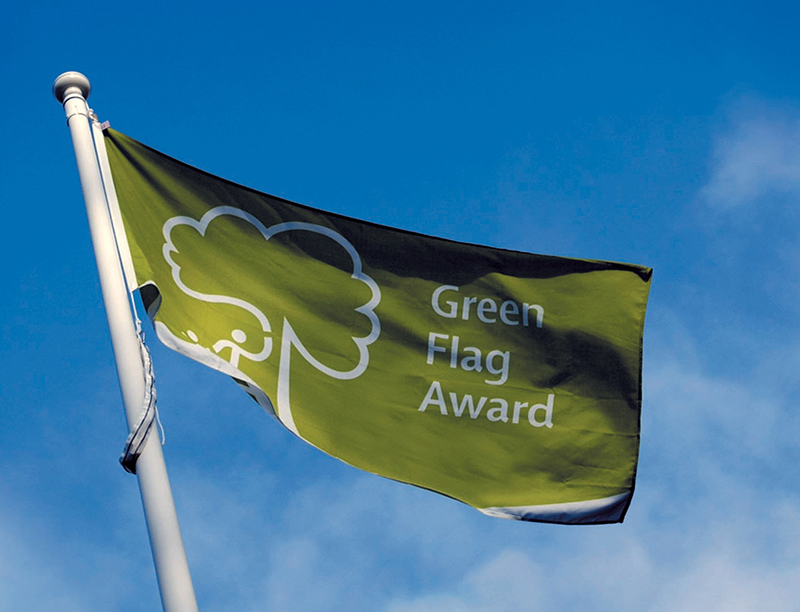


THE AREA BEHIND THE WALL ON THE LEFT WAS ORIGINALLY THE PADDOCK FOR WIGSTON HALL, WHICH WAS ON THE RIGHT. THE HALL WAS DEMOLISHED AND REPLACED WITH ELIZABETH COURT FLATS
10/10/2024
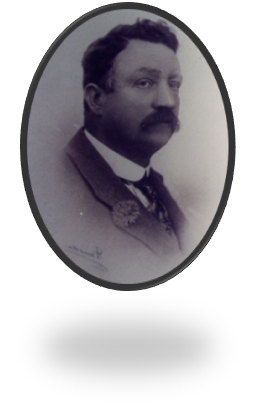
ALBERT HILL
WINNER OF GREEN FLAG AWARD 2024
Click On The Flag
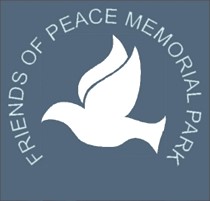
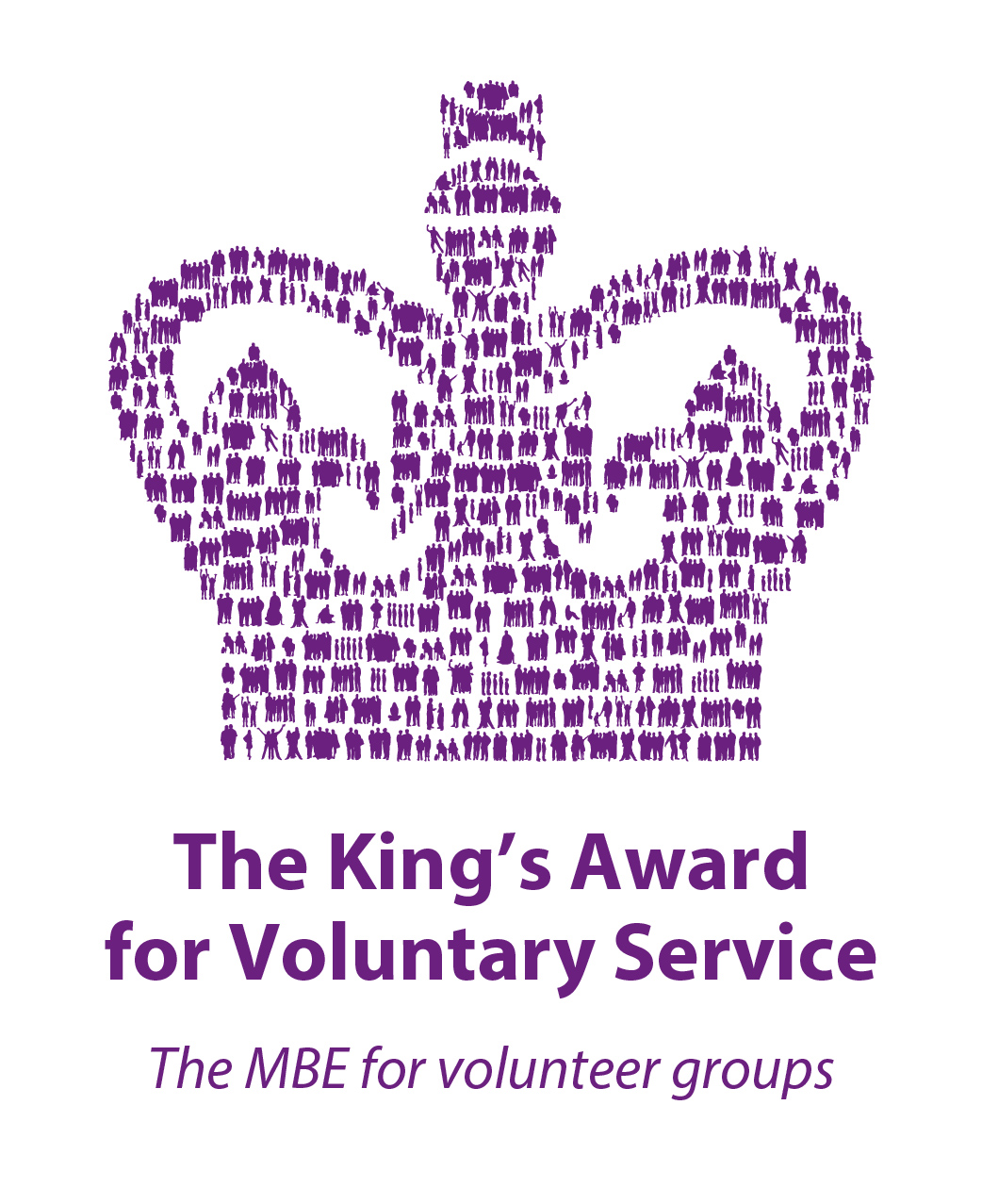
MEMORIAL GARDEN RESTORATION 2025
A Team of 5 GWHS Members Are Giving Their Time On Saturday Mornings To Restore The Memorial Garden
CLICK ON A PICTURE TO ENLARGE












































